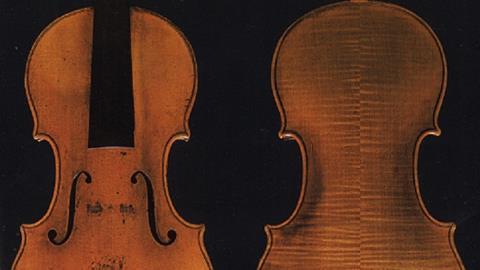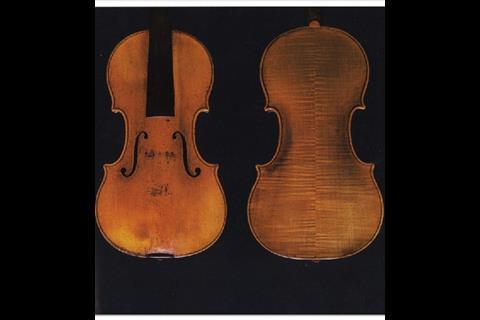
This illustration of a 1689 violin by Antonio Stradivari was published in The Strad, August 1985. The following text is extracted from the article accompanying the photographs:
This month's cover features a 1689 Stradivari violin recently discovered in Switzerland. The instrument is stylistically typical of the period between 1685 and 1689.
The instrument is well-preserved, giving us the opportunity to study the edgework on the back. This leads us to the question: did Stradivari originally finish all of his violins with a sharp crest outside the purfling, as regards the fluting and edgework?
We all know many French instruments were finished with the 1716 Salabue (Messie) style edgework, that is with very pronounced, sharp crests. The theory some have promoted is that all Strads were finished this way by the master and have worn down over the years. On some places on the back of this Strad there are edges with no wear or alteration and, importantly, no sharp crest. It is my opinion that Stradivari varied his edgework in a number of ways, from sharp to smooth, thick to thin, heavy to light.
Tonally, as is usual with well-preserved early examples of Stradivari, the violin is richly sweet with medium concert power. This consistency is due to the combination of Nicolo Amati-Strad style arching of the back, as well as some other Strad technologies, especially the outline of the instrument.










































No comments yet